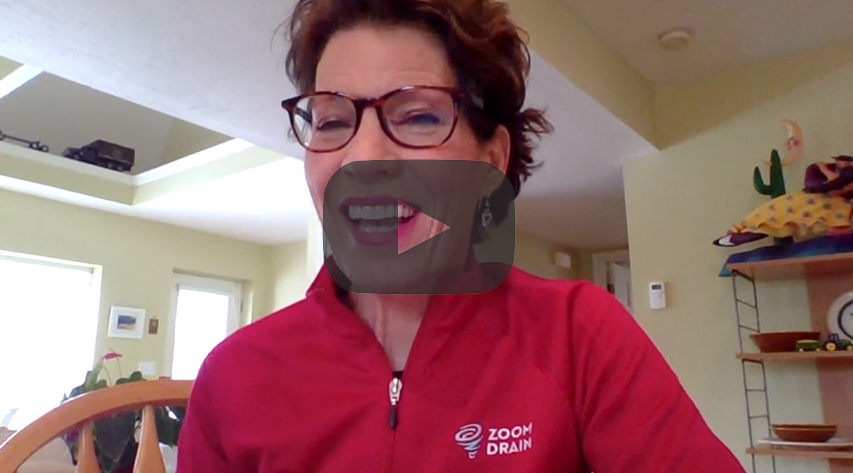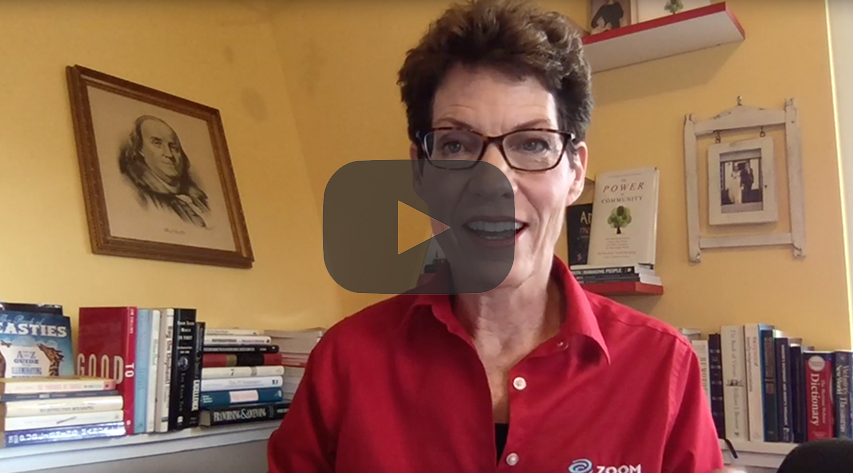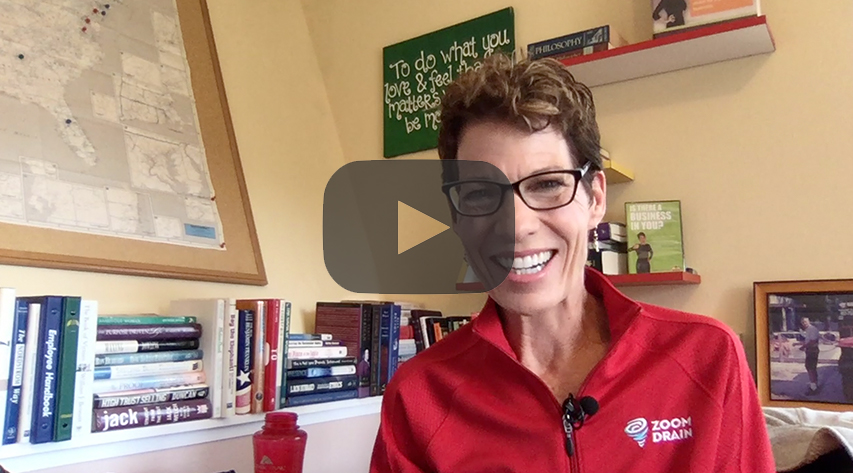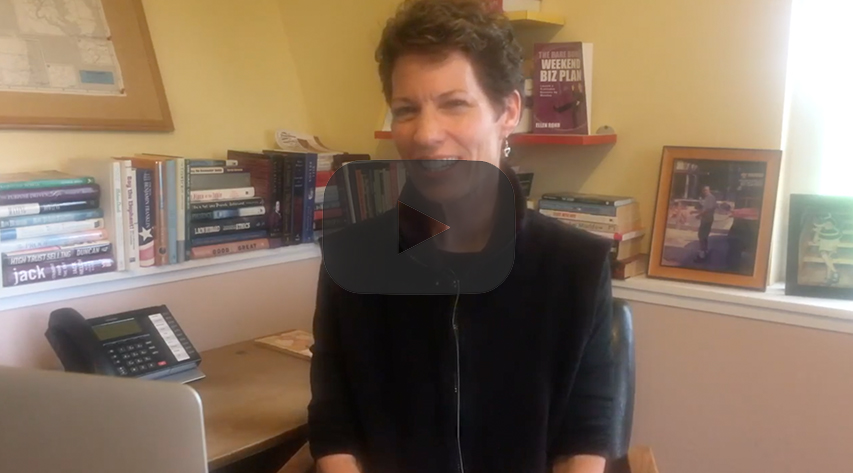 What can you learn by Riding Along? You don’t even have to do the Undercover part. Just GO. Hop in the truck (or the assembly line or the phone bank) and say, “Show me what you do. I am here to learn.” One of my best biz buddies is a master of the Ride Along. I wrote about him…and how to make the most of your time in the field. If you don’t go, you won’t know…
What can you learn by Riding Along? You don’t even have to do the Undercover part. Just GO. Hop in the truck (or the assembly line or the phone bank) and say, “Show me what you do. I am here to learn.” One of my best biz buddies is a master of the Ride Along. I wrote about him…and how to make the most of your time in the field. If you don’t go, you won’t know…
“His cardinal mistake is that he isolates himself, and allows nobody to see him; and by which he does not know what is going on in the very matter he is dealing with.”
Abraham Lincoln’s reason for relieving General John C. Fremont from his command in Missouri – September 9, 1861
President Lincoln wrote these words to the man he was appointing to replace General Fremont. The new General would make no mistake about what was required of him: Get out there and circulate among the troops.
Elected by a minority vote, with no executive or management experience, Abraham Lincoln took office shortly after seven Southern states succeeded from the union. It was a disastrous time in our country. His predecessor, James Buchanan left the White House declaring, “I am the last United States president.” Yet, President Lincoln led the country to the end of the Civil War, and to an undivided nation.
Lincoln was an extraordinary leader. He was a hand’s on leader, and by his concern, compassion and direct involvement, he earned the trust and respect of the American people. Particularly, the Union soldiers.
Lincoln understood what the soldiers were going through on the front lines. In 1861, he spent more time on the battlefields than in the White House. He visited the wounded, he counseled with the Generals and he saw first hand the results of his and their decisions. He was kind and affable and wholly supportive of the troops. He acknowledged them as performing “the hardest work in support of the government.” And the soldiers loved him for his appreciation of their sacrifices.
In his book, Lincoln on Leadership, Donald T. Phillips, writes:
“One of the most effective ways to gain acceptance of a philosophy is to show it in your daily actions. In order to stage your leadership, you must have an audience. By entering your subordinate’s environment – by establishing frequent human contact – you create a sense of commitment, collaboration and community….Many leaders in today’s complex work settings would argue that they can’t spend the amount of time Lincoln did with his subordinates. But, then again, they’re not trying to win a war. Or are they?”
Bill Raymond is a big fan of Abraham Lincoln. Bill is the president of Frank & Lindy Plumbing in lovely Peekskill, New York, and a first-rate trainer and life-long student of business. He gave me a copy of Lincoln on Leadership because we share an appreciation of the Great American Statesmen.
Bill has Lincoln-esque leadership skills. He’s a hand’s on manager, and he isn’t afraid to get in the game. He is a firm believer in The Ride Along.
How do I know what’s happening in the field if I don’t Ride Along with my techs? It’s expected that I will get out there and get in the game.
The techs are really the ones who pushed me into Ride Alongs. I tried imposing new sales techniques and customer service standards, and they would say, ‘You don’t know what it’s like out there! That will NEVER fly in the real world.” But, I wasn’t getting anywhere sermonizing from the training room. So, one day I put on a service uniform and hopped into a truck with one of my techs.
Prepare to be SCARED!
“Here’s what I discovered. As a manager, what you THINK is happening out there, well, it’s not. It’s downright scary what goes on in the field. And it’s not that the techs aren’t trying, or willing to do the right thing. It is just an incredibly difficult position. We need them to be sales professionals with great communication skills. We need them to have finely honed technical skills. We are asking our techs to be superhuman.
“Customers are stressed when they call a plumber. Nobody likes to deal with the hassle and expense of a plumbing emergency. A tech has to convince a frazzled, stressed, irritated individual that $1,000 or more is no big deal for a water heater? You can’t just sit back in your cozy office and say, ‘Sell more!’ You have to discover what’s going on with each technician, and help him get better at handling these situations.”
I agree with Bill. The Ride Along is an essential part of training and coaching. How do you really know what’s going on in the field? You gotta Ride Along.
Oh, I can hear your excuses:
“The tech won’t act the same with me along as he would without me. He’ll just put on a show. What good is that?”
“I don’t have time!”
“He’ll think I don’t trust him.”
“I don’t know what I would say.”
“What if a customer – gasp – wanted to talk to me?”
Do you see what’s happening here? You are afraid to Ride Along. These objections are just your fear talking. You are afraid of what you are going to see out there, so you just stay in the office.
Bill Raymond calls these moments, “Fear Junction.” He says, “The best way to combat fear is with pain. When the pain becomes big enough, then you’ll be willing to change. A 1% increase in billable hour efficiency makes a $35,000 difference in my bottom line in one year. For me, discovering the lost dollars associated with my billable hour efficiency was painful enough for me to overcome my fear of riding along.”
Here’s a potentially painful exercise: Start tracking your closing rate on service calls. Divide the number of service calls where you get the job and do the work by the number of calls run. Consider that over 90% of all customers get someone to do the work. What’s your closing rate?
If your closing rate is less than 90% you are burning up opportunities…and potential billable hours. If your closing rate is hovering at 50-60% why do any more marketing? You are just going to blow half of those calls. You better find out WHY you aren’t getting the sale. And the way to do that is to Ride Along.
Ride Along Rules and Recommendations
Getting Started: Before you hop in the truck, prepare yourself and make a plan for the Ride Along. Here are Bill’s recommendations…
What’s the goal of the Ride Along? Ride Alongs provide a great opportunity to “bond.” However, don’t forget that the number one reason you Ride Along is to help your technician improve his performance. Therefore….
Get current performance data. Bill asks, “How is this tech doing? What are his average sale, closing rate, and total sales numbers? How do his numbers match up to goal and budgeted figures? Get the facts. And pick a statistic. What performance measure do you want to improve?”
Use simple, standard systems for sales and troubleshooting. Do you have a formal sales training program at your shop? Do you have a written diagnostic checklist? “It makes it much easier to communicate if you are all using the same vocabulary and systems. Take sales and technical training classes together. And apply what you learn together in the field.” Use the Sales Process from the Getting it Sold section of The Bare Bones Biz Plan!
Use a checklist. Document what you are looking for in the field. Does your company have service standards? Go over the checklist with your techs ahead of time so they understand their priorities.
Suit up. Walk a mile in his shoes…in fact, wear the uniform shoes, and shirt…the whole nine yards. Bill says ,“When I put on the service uniform, you bet my techs check it out. If my shoes aren’t shined, they’ll let me have it. Wearing the uniform gives you more credibility with your techs.”
Communicate your purpose and expectations. “I tell my technicians, ‘I’m here to help you. And you’re going to teach me something today.’”
When to go: “Schedule one day each week to Ride Along. Stick with one tech for the whole day. You can’t judge a technician’s skills on just one call. And the first call you go on together will probably blow up on you. He will be extremely uncomfortable. So, make a day of it. Give him a chance to loosen up. And, always treat him to lunch.”
With Whom: Everyone. “Start out with your under-performing techs. If someone has a low closing rate, that’s a priority. However, don’t neglect to go with your top techs. They can teach you a lot about what’s working. Often, we ignore our best people. They need support and acknowledgement, too.”
Basic Game Rules: Look, listen and learn. “You can’t learn anything if you are doing all the talking. The technician will introduce me to the customer by saying, ‘This is Bill. He’ll be assisting me today.’ My job is to keep my mouth shut and observe.”
Also, stay and work. Help plumb, if you are a plumber. Carry tools and open doors if you are not. Pitch in to get the work done.
What to watch for: “How does he greet the customer? The customer is under a fair amount of duress when he calls us. How does the tech reduce the duress, and gain the trust of the customer? This can be subtle. Look for indicators that the customer is relaxing and starting to trust and like the tech: smiling, laughing, breathing easily, talking easily. Or negative indicators: frowning, not talking, arms folded across his chest, his boot up your butt. J What words seem to help, or not help?”
Other items to watch for…
- Did the tech ask good, information-gathering questions?
- Did he talk too much? Too softly? Did he really listen to the customer?
- Did he stand too close? Did he use positive eye contact?
- Did he use the price book?
- How did he present the company?
- How did he handle objections?
- Did he complete the paperwork, quickly and accurately?
- Was he efficient with his trips to and from the truck?
- Did he have all the tools and parts needed?
- Did he present add on items, upgrades or service agreements?
- Did he handle the primary reason for the call?
- Did he check the work afterwards, and communicate that to the customer?
- How efficient was the dispatching process?
How to give feedback:
- Wait until the call is complete and the work is all done. Then, radio the dispatcher to let him know that you’ll be out of the loop for an hour.
- Go get coffee, or stop for lunch.
- Give your feedback. Never jump into the middle of a call, even if you see the sale slipping through his fingers.
- Use your checklist to organize your comments. Start with the non-negotiable service standards. Did he do the things you require on each and every service call?
- Break down each point of the sales process. If it went well, have the tech relive the ‘win.’ If it went poorly, have the tech analyze what went wrong…and what could have been done differently. Go through the technical trouble shooting process the same way.
- There are behaviors that will help the sales process, and the trouble shooting process. And there are behaviors that will shoot you in the foot every time. Pin point the behaviors that help, and practice them in a ‘role-play.’ Then, try them out on the next call.”
- Let the technician talk. The more time you spend together, the easier it is for the tech to trust you…and share vital information about what really works…and doesn’t work…in the field.
The Ride Along is a great opportunity to get to know each other. Learn about his kids and hobbies. One of my techs said, ‘I’ve been working here a long time, but never really knew you.’ It made me feel good to finally connect with this guy on a personal level.
You can’t motivate people to do what you want them to do but you can create a culture where people want to play the game your way. If things aren’t going right in the field, there is one person to blame: Yourself. For not training. For not holding people accountable. And, for not creating a compelling vision for your team. One of my techs said that working for Frank & Lindy is like being a Navy Seal. He said it proudly, meaning it in the best way. That’s the culture I want to develop.”
Frank & Lindy is on the right track. Currently, Matt Shaw, Frank & Lindy’s top performing service technician, is posting an average sale of $1,214. That’s a 92.5% conversion rate and 73.9% billable efficiency rate. In fact, the lowest numbers on the scoreboard show an average sale of $572, and an 83% conversion rate. Most plumbing shops don’t come anywhere near those numbers. Pretty amazing.
Bill concludes, “We expect more and more from our service technicians. We want them to be kind, polite, helpful, punctual, clean livin’, technical wizards…with a great driving record. Gosh, we even expect them to smell good! We are demanding a lot of our service techs. The least you can do is get out there and appreciate their efforts.”
Abe would be proud of Bill.
















